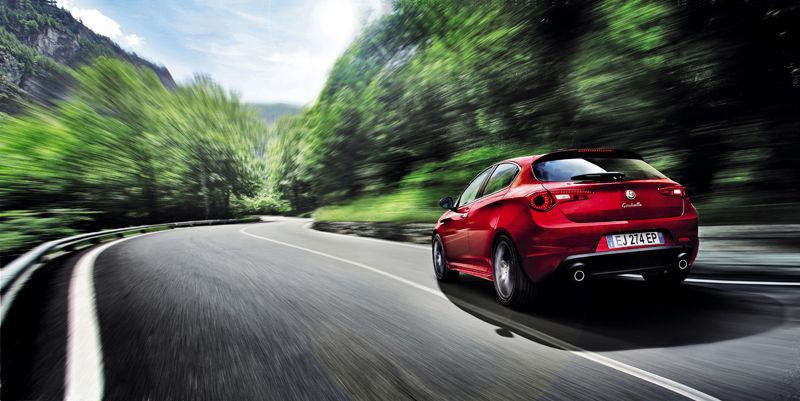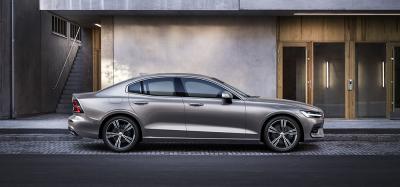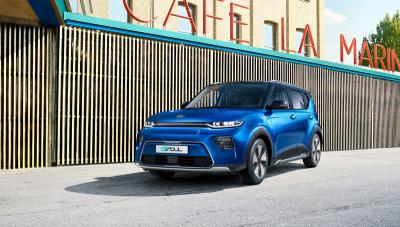Giulietta series three. This is how it could be described if it weren't that this latest one, which made its official debut in 2010, is nothing like its two illustrious predecessors of 1955 and 1977, badge apart, obviously.
The compact from the "biscione" (serpent), which replaces the popular 147 and is the natural continuation of a dynamic and personal image, should have been called Milan, but it was changed at the last moment in favour of its more celebrated progenitors. With this image it joined the stiff competition in the C segment, the one of mid-small saloons that have always been characterized by the most interesting and commercially hard-won levels of sales on the Old Continent, which, for the manufacturing companies, is the battleground where they can show the best value for money with the aim of capturing a younger public and consolidating their image among admirers.
Sporty character
The Alfa Romeo genetics can be seen in every detail of the new Giulietta, starting with its decidedly personal and highly characterizing aesthetic impact, in part inherited from the smaller Mito. Christopher Raitz, head of the Alfa Romeo Style Centre, and his pen are responsible for the trefoil design of the front that incorporates the classic shield grill, a large, drop-shaped headlight assembly, lower air intakes, a sloping bonnet with ribs in evidence, muscular wheel arches with a linking rib along the entire length of the sides intended to emphasize its cuneiform silhouette. Five doors that look like three thanks to "invisible" rear handles and a coupe type layout that was used also for previous saloons to highlight the brand's sporty character. Standard equipment in both the Progression and Distinctive layouts includes LED light clusters of headlights, daytime running lights and, on request, bi-xenon adaptive headlights with AFS for beam orientation. In line with its class, it is 4.35 metres long, 1.80 wide, 1.46 high and has a generous 2.63 m wheelbase, which means that the cabin is comfortable even with 5 people on board, so it meets the mobility needs of an entire family. The boot is a capacious 350 litres, considerable for this category, without sacrificing the rear bench seat.
With a linear and sporty dashboard that is reminiscent of the one in the feisty 8C Competizione, interior equipment seems to be especially complete even in the basic version, so much so that it guarantees, with the same accessories, an appetizing base price compared to its immediate rivals. Standard on all the Giuliettas is the radio CD with Mp3 and six acoustic diffusers (an optional is an ear-splitting Bose with ten loudspeakers), electric windows front and back, heated outside mirrors, onboard computer, a/c, refrigerated box, and six airbags to protect the occupants.
There are, of course, superior layouts or the optional elements of a real premium car, like GPS, bluetooth, electrically-adjusted rear seats, leather finishes and volumetric alarm.
Turbo for all
There are five power levels offered today by the Giulietta with six different engines, all turbocharged and distinguished by considerable flexibility in terms of reduced fuel consumption thanks to the Start & Stop system, even in the smaller 105 HP 1.6 Jtdm. The most substantial diesel, the 2.0 Jtd Multijet, has two power levels in the 140 and 170 HP configurations, as has the 1.4 petrol engine offered in a 120 HP version and a 170 HP version with the MultiAir valve control system. The jewel in the crown is the 235 HP 1750 Tbi turbo with petrol squeezed out by direct injection with dual continuous valve timing and a sophisticated "scavenging" control system that avoids the so-called turbo lag phenomenon by eliminating gaps in power. This really top-performance unit has a specific power of 134 HP/litre, the highest ever achieved by an Alfa Romeo engine, and boasts the Quadrifoglio Verde suffix, the logo that has accompanied the Biscione's peak-performance competition vehicles on the tracks.
All the engines have the new six-speed manual gearbox that belongs to the tri-axle transmission family and can cope with high levels of maximum torque like the 340 Nm reached at 1900 rpm by the Tbi Quadrifoglio Verde. A year after it appeared on the scene, shortly after the Geneva Car Show last year, the range has been completed with the introduction of the TCT versions, the very sporty dual clutch automatic designed to enhance its dynamism, which can be paired with the petrol 1.4 and JTD 2.0, both with 170 HP.
It is always the mechanical side that has been given a precise sporty connotation by Italian top management. Made on the new "Compact" platform conceived by the Fiat Group for multipurpose use, and with the future vehicles from Chrysler, the new associate brand, in mind, it is intended for versatile use with both front- and four-wheel drive. The platform is made from sought-after materials, like high-strength steel and the wide use of aluminium, as are the supports for the McPherson front suspension and the arms of the rear suspension to guarantee maximum rigidity combined with considerable savings in weight, which gives it the pleasing driving experience typical of Alfa Romeo.
In step with the mechanical equipment, the Alfa DNA unit provides the electronic management of all devices and is found on all versions of the Giulietta, together with Vehicle Dynamic Control (VDC), Acceleration Slip Regulation (ASR) with Hill Holder, Dual Pinion electric power steering, electronic differential Q2 with Dynamic Steering Torque (DST), the brake system and drive torque distribution. The three setup functions, which can selected by the driver, give different driving modes - Dynamic, Normal and All Weather - with characteristics that can be adapted to different driving and weather conditions.
Grip and rapid response to manoeuvres is guaranteed by the comprehensive range of wheels, which includes tyres for them all (except the 1750 Tbi) from 195/55 R16 to 205/55 R16. There are two specific packages, Sport and Premium, for more demanding customers, which have, in addition to the skirts, a larger brake system, stance lowered by 10-15 mm, and 17 or 18 inch wheels with sporty profile tyres of 225/45 and 225/40.

-
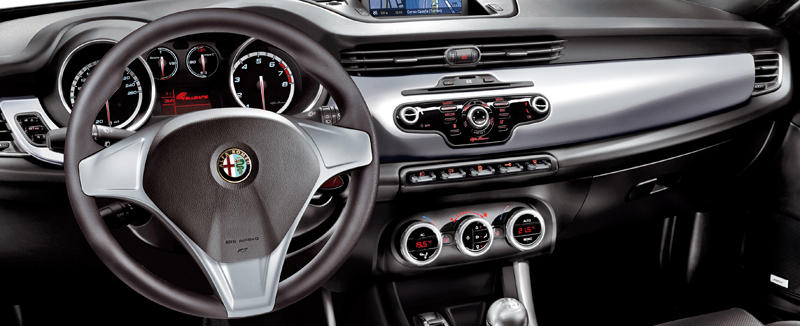
The instruments with dual circular elements borrowed from the feisty Alfa Romeo 8C Competizione
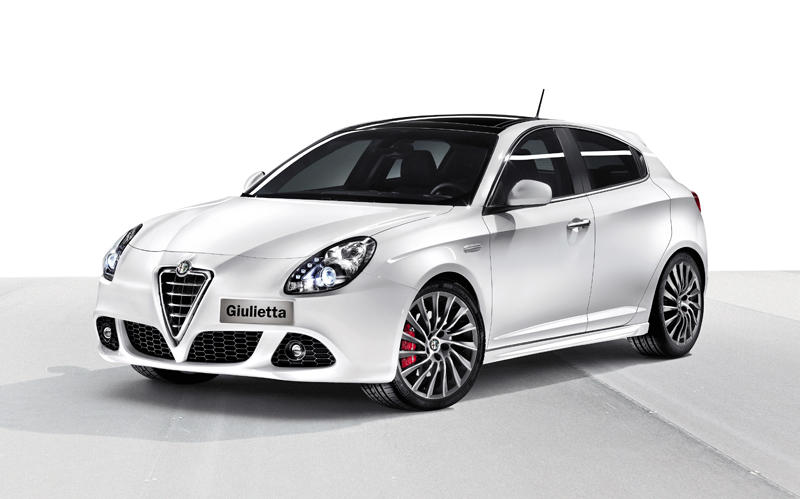
A sporty and very personal line; two layouts are available with 16'' wheels
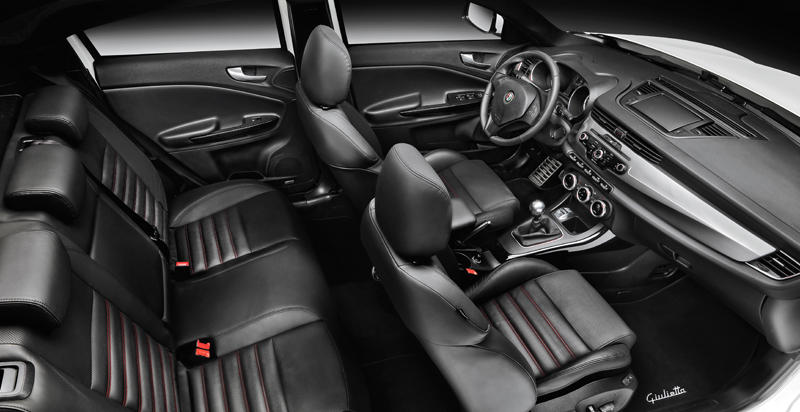
A spacious, ergonomic cabin with five comfortable seats and a 350 litre boot
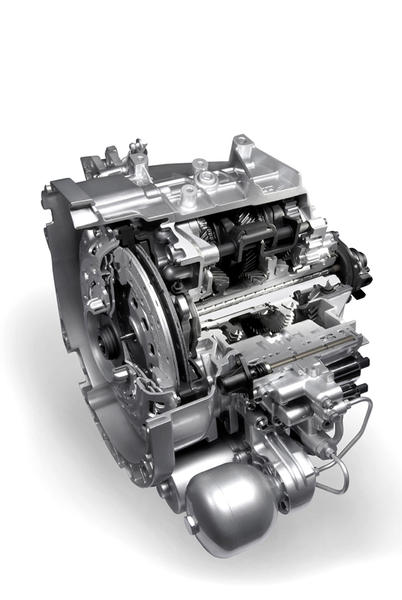
Four diesel or petrol engines, all turbocharged, give five power levels combined with reduced emissions
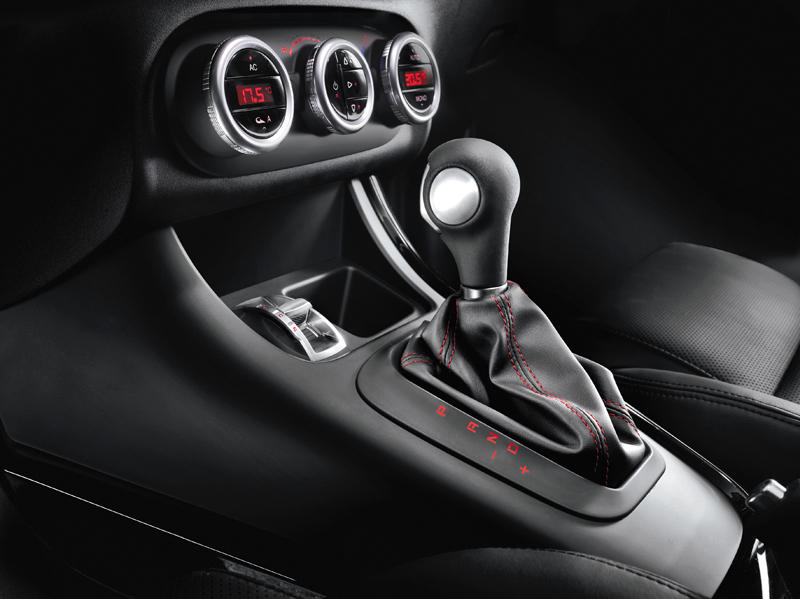
-
